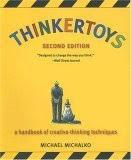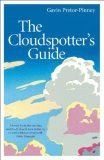
In his book Thinkertoys: A Handbook of Creative-Thinking Techniques, Michael Mickaldo describes the newspaper headline illusion. He proposes the following experience:
“Have someone hold up a newspaper just far enough away that you cannot read the
headline. Ask the person to tell you what the headline says. As soon as they do
so, you will be able to read it. This is known as the newspaper headline
illusion, and it is based on expectation. You read the headline because you think you can read the headline because you expect to read
it.”
Vision is done as much by the brain as it is by the eyes. Your eye can “see” but your brain may not register. In fact, your brain is programmed to filter the thousands of stimuli that our senses are bombarded with every second so that we can make sense of the world around.
The trouble is that, as a painter, you want to observe the world the best you can and make conscious choices, artistic choices on what you keep and what you leave out of your work. You can improve the quality of your observation by learning what you should see.
Learning the logic of the world around will change the way you see, it in the same way that believing something is possible makes it possible.
If you doubt how the mind can expand or restrict our vision of the world and rule what we can achieve, think about this: for many years, physiologists said that it was impossible to run a mile under 4 minutes. On May 6, 1954, Roger Bannister, a medical student, stepped onto the racetrack at Oxford, broke this barrier, and ran a mile in 3min 59.4 sec. The previous record, over 4 minutes, was 9 years old. Guess what happened next? Just 46 days later, on June 21, Bannister’s record was broken in Finland by John Landy who ran a mile in 3min 57.9 sec. Now they knew it ws possible.
There are 4 ways you can expand your observation skills:
1) By direct observation. In a fast paced world, we are not taking enough time to stop and just observe.
2) Study the work of other artists: Artists have observed the world around for centuries and have solved colour and composition problems their own way. You can take it a step further and copy the masters. By copying, you force yourself to scrutinize the model, analyze what the artist has done and your hand is able to register the information too.
3) Read books by artists. Instruction books will address technical issues and are a good way to learn the craft. But also read artist’s correspondence and writing to get new ideas and insight into their creative process.
4) Read books on various topics like science or geography. I already
 mentioned this point in my previous article on Drawing and painting trees. Science feeds on observation as much as art does. Leonardo da Vinci was a perfect example of scientific curiosity nourishing an artistic vision. If you read descriptions of trees, if you learn the name and shapes of clouds formations, if you learn how they appear and evolve, you will be able to observe them and draw them more accurately. As an example, a book I have on my reading list is “The Cloudspotter's Guide
mentioned this point in my previous article on Drawing and painting trees. Science feeds on observation as much as art does. Leonardo da Vinci was a perfect example of scientific curiosity nourishing an artistic vision. If you read descriptions of trees, if you learn the name and shapes of clouds formations, if you learn how they appear and evolve, you will be able to observe them and draw them more accurately. As an example, a book I have on my reading list is “The Cloudspotter's GuideRelated articles
Drawing and painting trees.

No comments:
Post a Comment